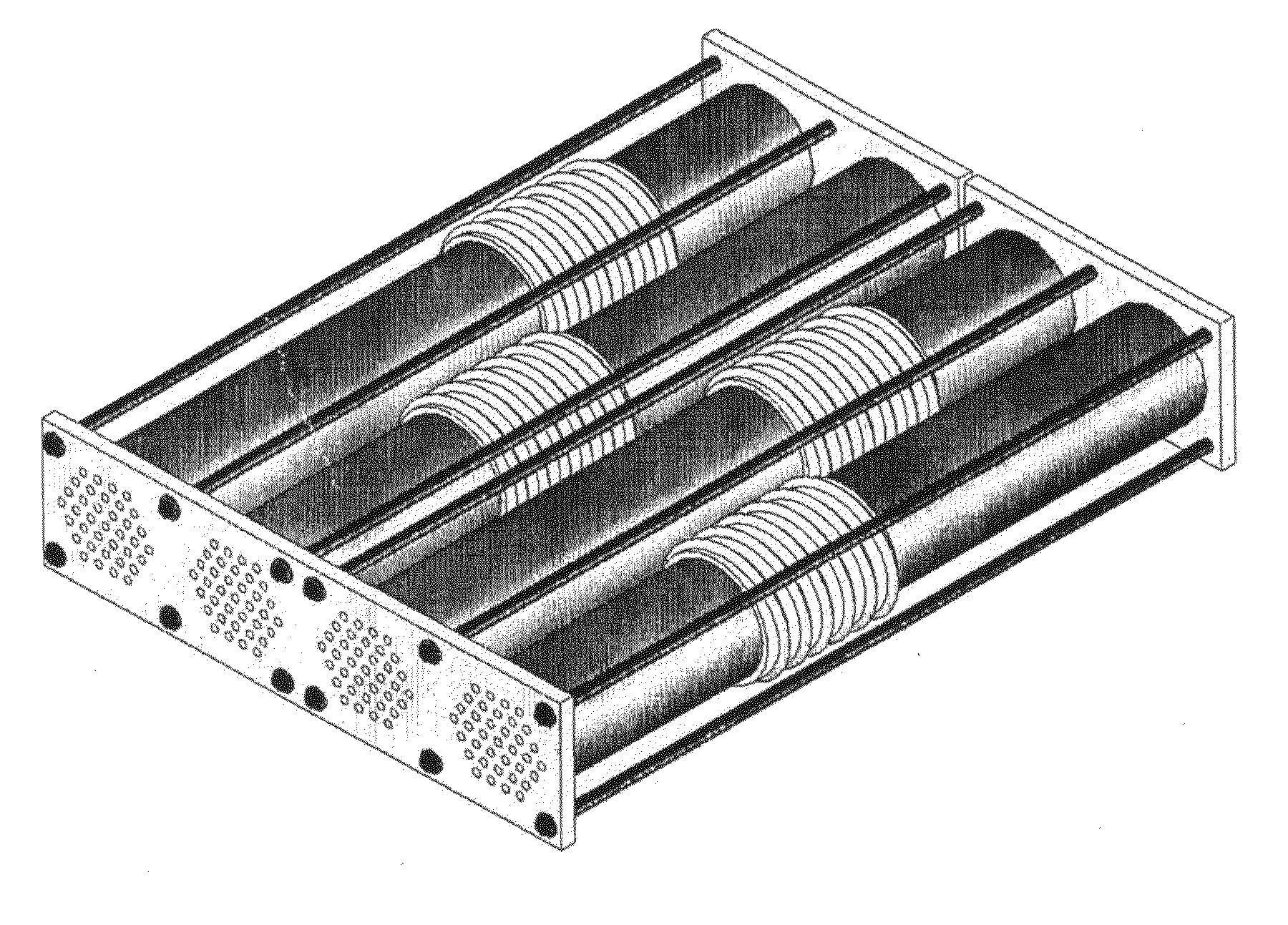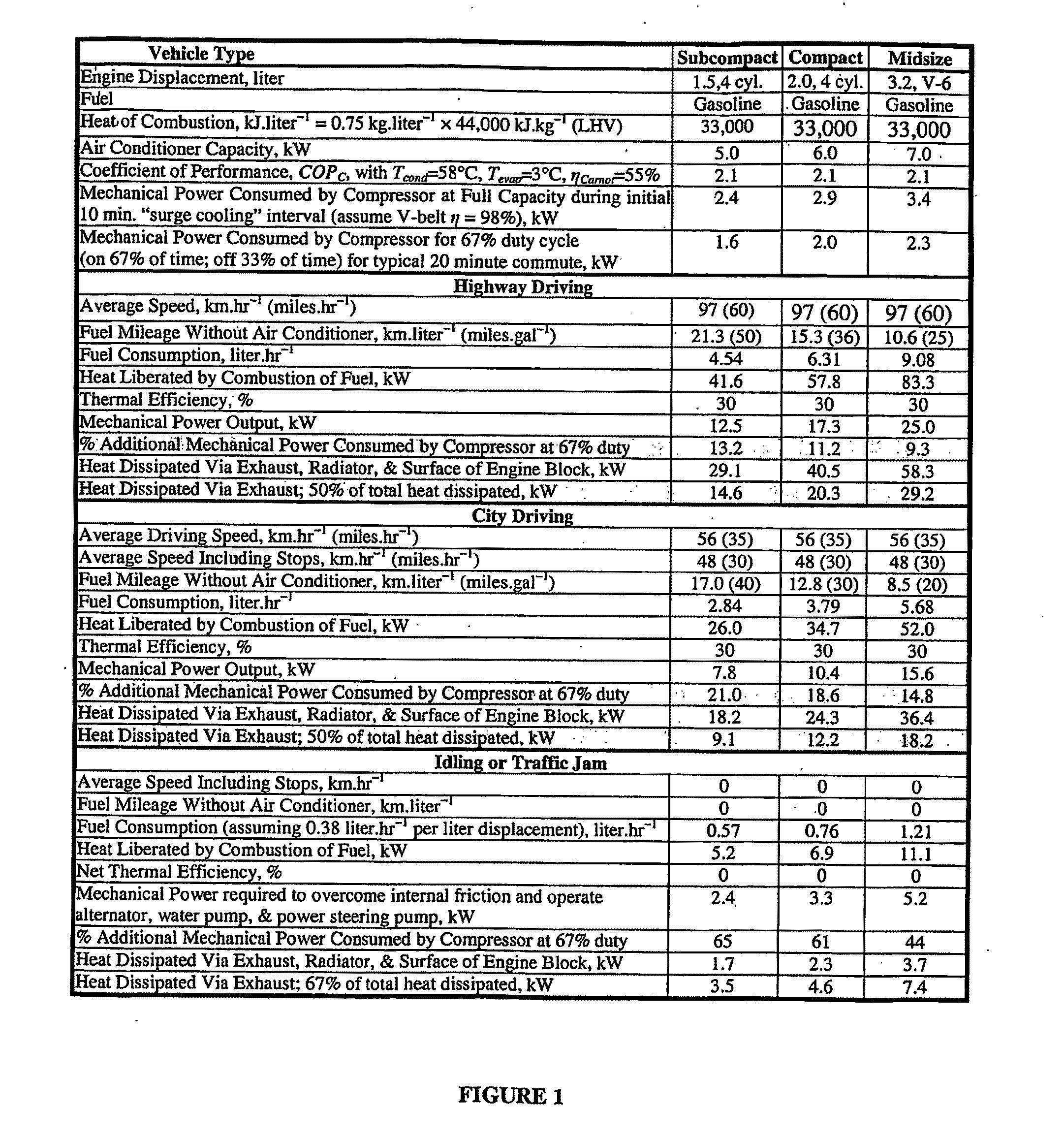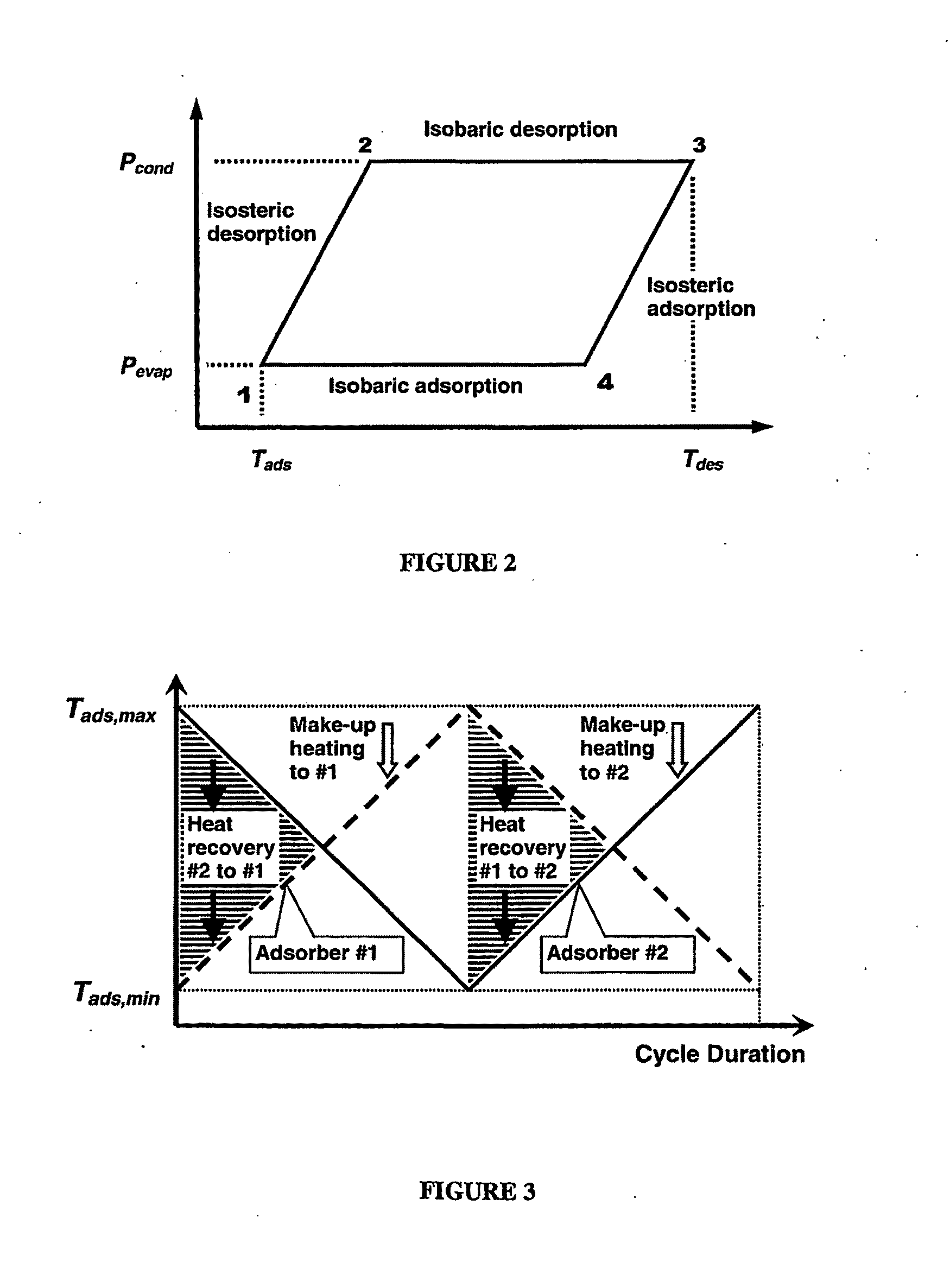Automotive adsorption heat pump
a heat pump and auto-adsorption technology, applied in the field of auto-adsorption heat pumps, can solve the problems of long delay (5+ min.) in the frigid period, attendant losses in efficiency, and cannot meet the efficiency of the best reversed rankine cycle design, and achieve the effect of less expensive and efficient and reliabl
- Summary
- Abstract
- Description
- Claims
- Application Information
AI Technical Summary
Benefits of technology
Problems solved by technology
Method used
Image
Examples
Embodiment Construction
[0092]As used in this disclosure, the singular forms “a”, “an”, and “the” may refer to plural articles unless specifically stated otherwise. Furthermore, the use of grammatical equivalents of articles is not meant to imply differences among these terms unless specifically indicated in the context. Unless defined otherwise, all technical and scientific terms used herein generally have the same meaning as commonly understood by one of ordinary skill in the art to which this invention belongs.
[0093]To facilitate understanding of the invention set forth in the disclosure that follows, a number of terms are defined below.
[0094]A surface, contact, or cross-sectional area (m2)[0095]cp specific heat (J.kg−1.K−1)[0096]C thermal capacitance, or thermal “mass,” C=m×cp (J.K−1)[0097]C• dynamic thermal capacitance, C•=m•×cp (W.K−1)[0098]COPC coefficient of performance for cooling, a dimensionless measure of efficiency[0099]Dh hydraulic diameter (m)[0100]hads heat of adsorption (kJ.kg−...
PUM
 Login to View More
Login to View More Abstract
Description
Claims
Application Information
 Login to View More
Login to View More - R&D
- Intellectual Property
- Life Sciences
- Materials
- Tech Scout
- Unparalleled Data Quality
- Higher Quality Content
- 60% Fewer Hallucinations
Browse by: Latest US Patents, China's latest patents, Technical Efficacy Thesaurus, Application Domain, Technology Topic, Popular Technical Reports.
© 2025 PatSnap. All rights reserved.Legal|Privacy policy|Modern Slavery Act Transparency Statement|Sitemap|About US| Contact US: help@patsnap.com



